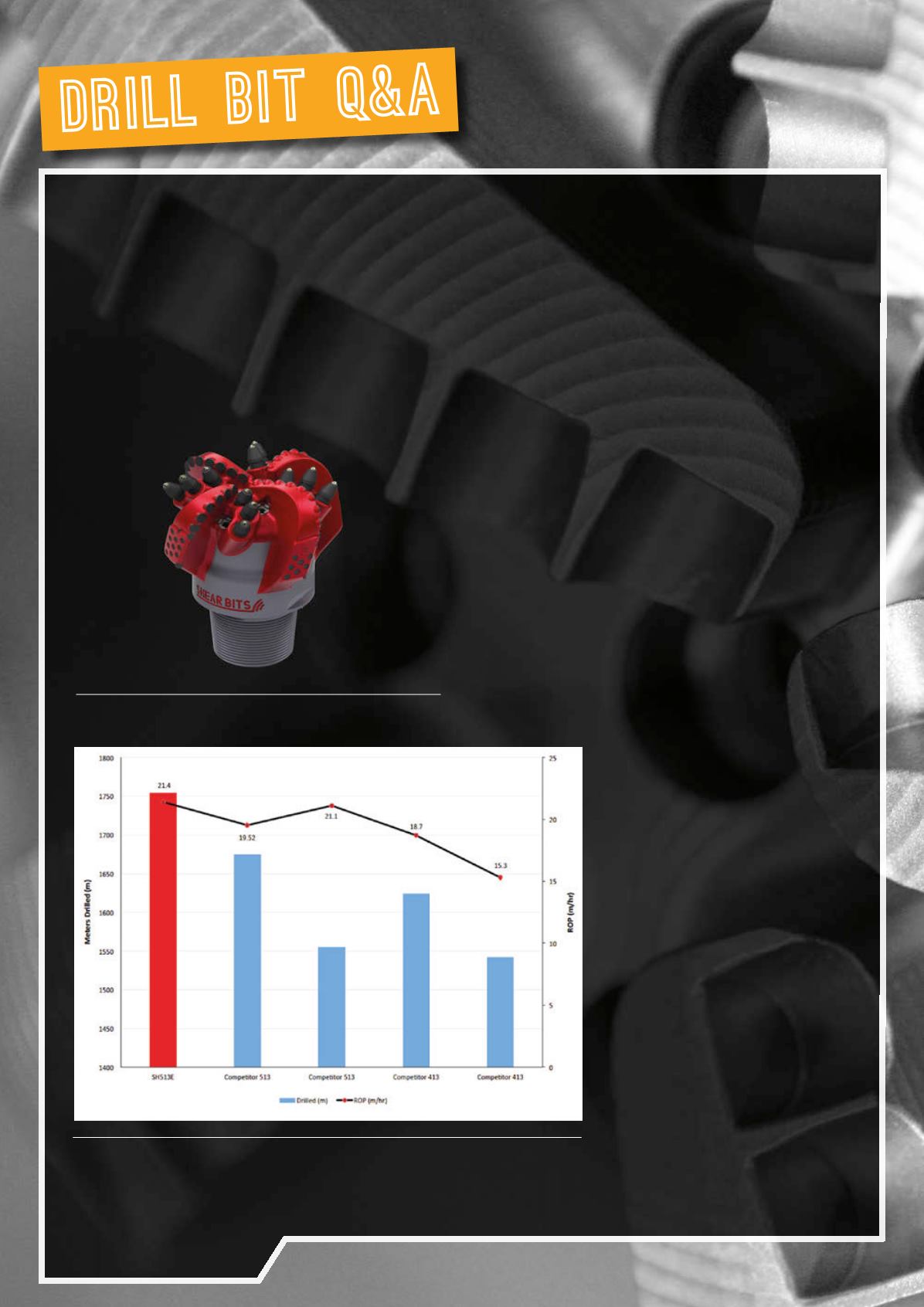
26 |
Oilfield Technology
January
2016
Dri ll Bit Q&A
Advancedmaterial selection
Two of the most challenging applications in the world for drill
bit bodies are drilling oilsands, and drilling in situations where
the mud (drilling fluid) contains high solids content. In both
of these examples, the bit body is exposed to an environment
that is not dissimilar to sand-blasting or media-blasting. In
oilsands applications, the formation is typically very soft and
unconsolidated, but contains abrasive sands that are easily
entrenched in the drilling fluid, which is ultimately similar to
scenarios where the drilling mud contains a high percentage
of abrasive solids. Until quite recently, only matrix-bodied
bits were used in these applications due to the enhanced
wear resistance of the tungsten carbide matrix construction in
comparison to steel-bodied bits. However, with the introduction
of composite-bodied bits in 2012, Shear Bits changed that
equation and proved that composite-bodied bits outlasted
both matrix-bodied and steel-bodied bits in the world’s most
challenging environments.
Despite the fact that composite-bodied bits have
conclusively proven to be superior to all other construction
techniques, in the most severe environments, body wear remains
an issue to be addressed. Working in conjunction with a leading
supplier of wear resistant surface coating technologies, further
improvements have been realised through the development of
advanced formulations of tungsten carbide hard metal coatings.
The new wear resistant layer now contains nearly 50% more
carbide than is found in matrix-bodied bits with additional
abrasion resistant components to enhance wear life. In one very
challenging horizontal application, where the gage pads of the
bit are under constant loading against highly angular sands,
the new material proved to substantially reduce material loss
compared to previous materials. The images in Figure 4 are from
the same bit (identical serial number) used on the same pad
with the same rig, same operator, same BHA and same operating
parameters. The results, therefore, are as applicable as can
be found in any field trial situation. As seen in the images, the
leading edge of the gauge pad with the existing material suffered
complete loss of the protective coating,
while the new material held up effectively.
BoostingROP
Over the past 30 years, there has been
a consistently growing trend in the
industry to replace rollercone bits with
PDC bits, primarily due to the fact that
PDC bits tend to drill further and faster
than rollercone bits. In the mid 1980s,
a very small percentage of applications
were drilled with PDC bits, but today
PDC bits reportedly drill over 85% of
the total footage in oil and gas wells.
Of the remaining 15% of applications,
there are many situations where PDC
bits are completely ineffective due to
the formations encountered. In those
applications, ROP tends to be low due
to the drilling mechanism of rollercone
bits, and therefore an opportunity exists
to increase performance and deliver cost
savings in these challenging intervals.
In one such application, drilling a
surface hole interval through heavy gravel
Figure 3.
Relative performance of the 6¼ in. SH513E PDCdrill bit with newPDC cutter
technology.
Figure 2.
12¼ in. SVP419- Pexus HybridDrill Bit.


